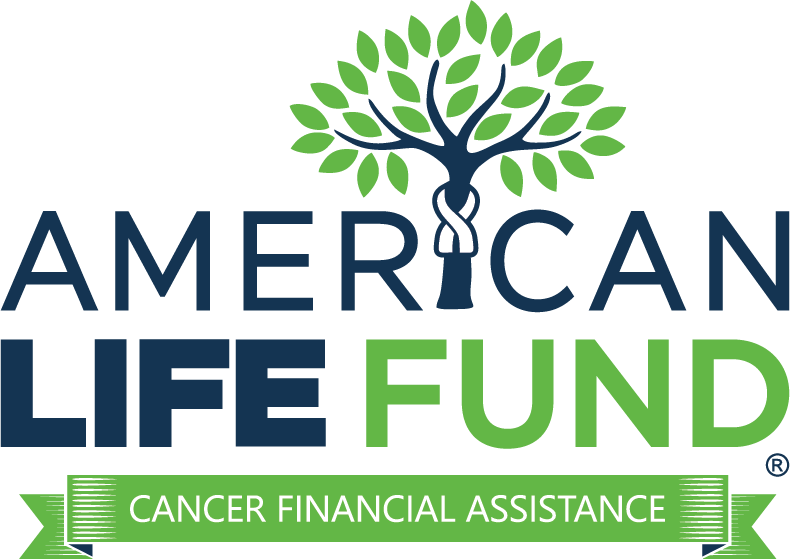Financial concerns can add tremendous stress to an already challenging situation when faced with terminal or chronic illness. Did you know the average cost of cancer treatment ranges from $10,000 to $30,000 per month? With the median household income hovering around $70,000 annually, it’s clear that many families are financially unprepared for such expenses. What if there was a way to convert your life insurance policy into immediate funds to help cover these costs?
That’s where viatical settlements come into play. At American Life Fund, we specialize in helping individuals access the funds they need through viatical settlements. Our team is here to guide you through the process, making sure you fully understand how viatical settlements work, their benefits, and any potential risks. We’re committed to providing clear, straightforward information so you can make informed decisions about this important financial option.
Viatical Settlement Key Takeaways
- Viatical settlements offer financial relief to policyholders with serious illnesses by providing immediate funds.
- To be eligible for a viatical settlement, you must have a life-threatening illness, an estimated life expectancy of two years or less, and a life insurance policy with a face value of $150k or more.
- The process of viatical settlements is regulated and involves reputable brokers to ensure a fair and transparent transaction for sellers and buyers.
- Viatical settlements offer immediate cash value for medical expenses and living costs, enhancing life quality and alleviating financial stress during such challenging times.
- Viatical settlements differ from life settlements because they cater to individuals with a shorter life expectancy due to serious illnesses.
- Risks associated with viatical settlements include uncertainty of life expectancy for buyers.
- State laws regulate viatical life settlements, and the process involves legal contracts to protect the interests of all parties involved.
- Choosing a reputable viatical settlement provider or broker significantly impacts the process and outcome of the settlement.
- Viaticals are a lifeline for policyholders facing financial pressures due to life-threatening illnesses, allowing them to focus on their well-being and medical care.
Get A Viatical Quote Today
Understanding Viatical Settlements
A viatical settlement serves as a financial lifeline for policyholders facing life-threatening illnesses. By selling their life insurance policy to a third party for a lump sum cash payment, policyholders receive immediate financial assistance during a desperate time. This immediate cash can cover medical expenses, living costs, or any other financial needs, enhancing their quality of life and alleviating financial pressure due to unaffordable premiums.
How It Works
- Eligibility: To qualify for a viatical settlement, the policyholder must meet specific criteria. These typically include having a life-threatening illness, such as cancer, ALS, or another serious condition. Additionally, factors like the type of life insurance policy they hold and the policy amount also play a crucial role in determining eligibility. Our team will assess your situation to determine if a viatical settlement is the right option for you.
- Evaluation: Life settlement providers assess the policyholder’s eligibility based on these factors.
- Settlement Process: Once deemed eligible, the policyholder receives an offer. Upon acceptance, the buyer takes over premium payments and receives the death benefit upon the seller’s death. In return, the policyholder receives a lump-sum cash payment.
Benefits for Policyholders
- Immediate Cash: Provides funds to cover living costs and medical expenses, such as urgent medical bills, prescription costs, and alternative treatments.
- Improved Quality of Life: Eases financial concerns, allowing policyholders to focus on treatments and experiences that promote well-being.
- Financial Relief: Reduces the burden of high insurance premiums by converting the policy into a lump sum cash payment.
See our post for a better understanding of the benefits of viatical settlements.

Get A Viatical Quote Today
The Viatical Settlement Process
Starting the viatical settlement process may appear intimidating, but understanding each step simplifies it. The typical process includes:
- Deciding on a Company: Choose the right partner, whether a broker, provider, or viatical settlement company, as this significantly impacts the experience and outcome. Many individuals find that working with a reputable viatical settlement company helps simplify the process and ensures they receive the best possible value for their policy.
- Submitting Documentation: Prepare and submit essential documents like medical records and personal data for assessment. Carefully preparing and submitting all required documentation can lead to a smoother and faster evaluation, making sure that the process moves forward without unnecessary delays.
- Undergoing Underwriting: The provider evaluates the policyholder’s life expectancy, policy value, and premium payments to determine eligibility and offer. Through a thorough evaluation of medical records and policy details, providers can present a fair offer that reflects the individual’s specific circumstances.
- Receiving an Offer: Based on the evaluation, the provider issues an offer. After the evaluation, individuals often receive an offer that provides the financial support needed, allowing them to focus on their health and well-being.
- Closing the Settlement: The policyholder accepts the offer, signs closing documents, and the policy ownership is transferred. Once the offer is accepted, signing the closing documents and transferring policy ownership are handled efficiently, providing peace of mind throughout the process.
- Obtaining Funds: The policyholder receives the lump sum payment, usually within three business days of the process being finalized. Receiving the funds quickly, typically within three days, allows for immediate financial relief, helping to cover medical expenses and other urgent needs.
Application and Documentation
Prepare for the application by gathering essential documents such as medical records and policy information. These are crucial for the provider to assess eligibility and determine an appropriate offer.
Once the documentation is submitted, the provider assesses the application. If approved, a letter of declaration is issued, and funds are typically sent within three business days upon the transfer of ownership of the policy.
Evaluation and Offer
During the evaluation and offer phase, the provider considers:
- Life Expectancy: Estimated based on medical information and prognosis.
- Policy Value: The face value of the policy.
- Premium Payments: Required ongoing premiums.
These factors guarantee a fair offer is made to the policyholder.
Closing and Payment
Once the policyholder accepts the offer, the closing process begins. This involves:
- Analyzing and signing closing documents.
- Transferring policy ownership.
- Receiving a lump sum payment.
The contract, a legal document, outlines terms such as payment details and cancellation rights. The lump sum payment provides immediate financial relief, allowing the policyholder to focus on their well-being and medical care.
Eligibility Criteria for Viatical Settlements
Certain restrictions govern the eligibility for viatical settlements. To qualify, an individual must have a serious illness. Additionally, viatical settlement companies generally require the policy to have a face-value amount of $150,000 or more. Specific health conditions that may qualify a person for a viatical settlement include cancer, ALS, Alzheimer’s, dementia, and advanced heart or kidney disease.
Health Status and Life Expectancy
Health status and life expectancy play a significant role in determining eligibility for a viatical settlement. The policyholder’s medical condition, diagnosis, and treatment history are required for the application process.
Certain diseases that may qualify a policyholder for a viatical settlement include:
- Cancer
- ALS
- Alzheimer’s
- Dementia
- Advanced Heart or Kidney Disease
Life Insurance Policy Age and Value
In addition to health status and life expectancy, the policy’s age and value are necessary in determining eligibility for a viatical settlement. A Viatical settlement broker typically requires a minimum policy age of two years and a minimum policy value usually starting at $150,000. These requirements ensure that the policyholder has adequate coverage and that the settlement amount is proportionate to the investment.
Viatical settlement offers are generally within 30% to 70% of the policy’s value. By meeting policy age and value requirements, policyholders access the financial benefits of a viatical settlement during challenging times.

Get A Viatical Quote Today

Risks and Considerations for Sellers and Buyers
While viatical settlements provide much-needed financial relief for policyholders with life-threatening illnesses, it’s important to understand some key considerations for both sellers and buyers.
Seller Considerations
- Loss of Life Insurance Coverage: Once you sell your policy, you no longer have the life insurance coverage it provided. It’s important to consider whether this coverage might be needed in the future.
- Changing Priorities: Your decision to sell may change if your health or financial situation improves. This decision is personal and should align with your current and future needs.
Buyer Considerations
- Life Expectancy: The time frame of returns can vary based on the seller’s life expectancy. While this introduces some uncertainty, it is managed through careful evaluation.
- Premium Payments: If there are remaining premiums, buyers need to continue paying them. This is part of the investment strategy and is considered during the purchase.
- Liquidity: Viatical settlements are generally long-term investments and may not be easily sold before maturity. This is a common aspect of many types of investments.
- Valuation and Carrier Stability: Ensuring the accuracy of policy valuation and the stability of the insurance carrier are important factors that buyers should review.
Comparing Viatical Settlements to Life Settlements
Despite sharing similarities, viatical and life settlements cater to different demographics and pay different payouts. Viatical settlements are designed for individuals suffering from a serious or chronic illness.
On the other hand, life settlements are designed for individuals aged 75 or above without significant health issues, who no longer require or can afford their life insurance policy. Payouts for viatical life settlements are generally higher than those for life settlements due to the shorter life expectancy of the policyholder.
Understanding the differences between these two types of settlements can help policyholders determine which option is best suited to their unique circumstances and financial needs.


Alternatives to Viatical Settlements
While viatical settlements can provide significant relief for policyholders with life-threatening illnesses, it’s also worth considering other options. Life settlements, for example, are aimed at healthy senior-aged individuals over 75 who no longer need or can afford their life insurance policy.
It is essential for policyholders to make sure they:
- Weigh the pros and cons of each option
- Make informed decisions
- Alleviate financial pressures during challenging times.
Legal Aspects and Regulation of Viatical Settlements
Understanding the legal aspects and regulations surrounding viatical settlements is crucial to ensuring a secure and transparent transaction. At American Life Fund, we prioritize your protection and peace of mind throughout this process.
- Protection and Legitimacy: The legality of viatical settlements was firmly established by the Supreme Court case Grigsby v. Russell in 1911. This landmark decision recognized life insurance policies as assets that can be sold, providing you with a legitimate option to convert your policy into immediate cash.
- State-Specific Regulations: Regulations for viatical settlements vary across the U.S., which may impact how your settlement is handled depending on where you live. States like Alabama, Missouri, and South Dakota have no specific regulations in place, making it even more important to choose a trustworthy provider. We guide you through these differences to guarantee compliance and protect your interests.
- Regulatory Oversight: In states where regulations exist, insurance commissioners enforce standards that viatical settlement companies must follow. These regulations include licensing, verifying coverage, and maintaining ethical practices, all of which are designed to protect you from unfair practices and fraud.
- Uniform Standards: The Viatical Settlements Model Act, developed by the NAIC, sets out clear guidelines for the industry. It makes sure that viatical settlement providers and brokers are licensed and regulated, offering you a consistent and reliable experience no matter where you are.
- Commitment to Transparency: Our commitment to following these legal guidelines means that you can trust us to conduct your viatical settlement with fairness and transparency. We ensure that you receive a fair offer and that all transactions are handled ethically and securely.
Choosing the Right Viatical Settlement Provider
Choosing the appropriate viatical settlement provider improves the process’s experience and outcome. Policyholders can work with brokers, providers, or viatical settlement companies to sell their life insurance policy.
While providers purchase the policy from the policyholder and become the new owner and beneficiary, brokers act on behalf of the policyholder to negotiate the sale of the life insurance policy. By carefully considering their options and working with a trusted viatical settlement company, policyholders will confidently pass through the viatical settlement process and achieve the best possible outcome for their unique circumstances.
Summary
Viatical settlements offer a valuable financial solution for policyholders facing serious illnesses, providing immediate cash for medical expenses, improved quality of life, and financial relief from unaffordable premiums. Policyholders will make better-informed decisions about this financial option during challenging times by understanding the eligibility criteria, process, risks, and legal aspects of viatical settlements and considering alternative options. With the right guidance and support, a viatical life settlement can be a lifeline that alleviates financial pressures and allows policyholders to focus on their well-being and medical care.
Frequently Asked Questions






